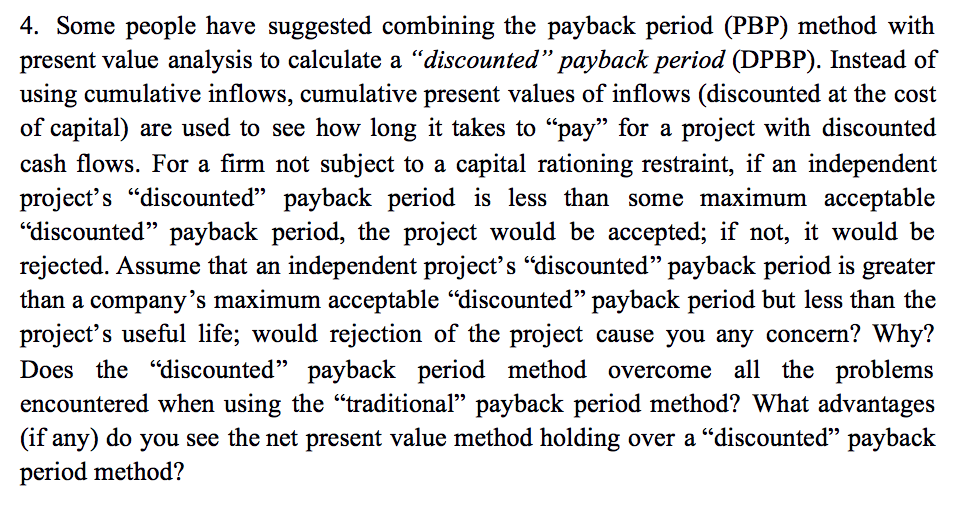
a 4. Some people have suggested combining the payback period (PBP) method with present value analysis to calculate a "discounted payback period (DPBP). Instead of using cumulative inflows, cumulative present values of inflows (discounted at the cost of capital) are used to see how long it takes to pay for a project with discounted cash flows. For a firm not subject to a capital rationing restraint, if an independent project's discounted payback period is less than some maximum acceptable "discounted payback period, the project would be accepted; if not, it would be rejected. Assume that an independent project's "discounted payback period is greater than a company's maximum acceptable discounted payback period but less than the project's useful life; would rejection of the project cause you any concern? Why? Does the discounted payback period method overcome all the problems encountered when using the traditional payback period method? What advantages (if any) do you see the net present value method holding over a discounted payback period method? a 4. Some people have suggested combining the payback period (PBP) method with present value analysis to calculate a "discounted payback period (DPBP). Instead of using cumulative inflows, cumulative present values of inflows (discounted at the cost of capital) are used to see how long it takes to pay for a project with discounted cash flows. For a firm not subject to a capital rationing restraint, if an independent project's discounted payback period is less than some maximum acceptable "discounted payback period, the project would be accepted; if not, it would be rejected. Assume that an independent project's "discounted payback period is greater than a company's maximum acceptable discounted payback period but less than the project's useful life; would rejection of the project cause you any concern? Why? Does the discounted payback period method overcome all the problems encountered when using the traditional payback period method? What advantages (if any) do you see the net present value method holding over a discounted payback period method







